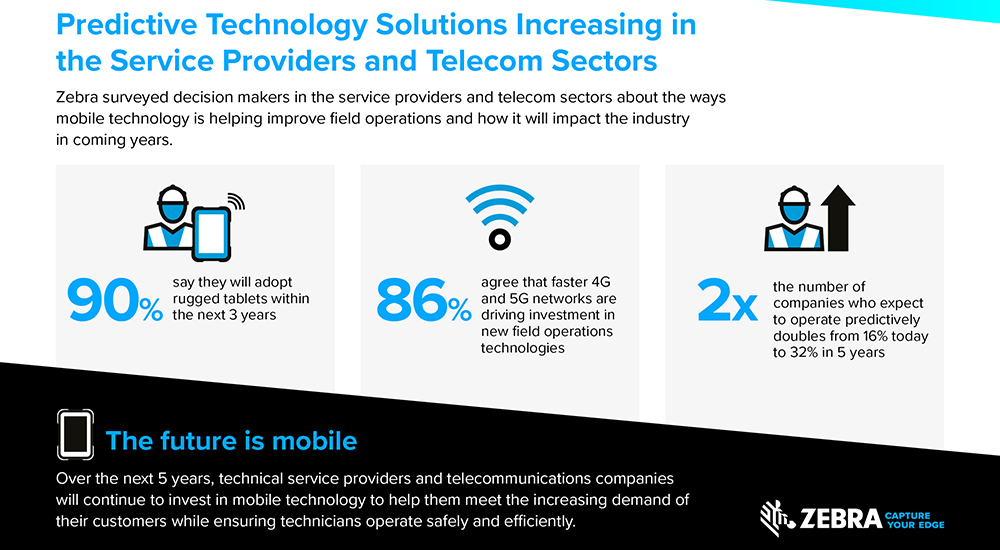Usage of predictive solutions in mobile strategy set to double in five years, Zebra

Zebra Technologies has announced study findings that reveal field service providers in the telecommunications and technical industries globally will increase the use of mobile technologies to optimise and transform workflows in the field.
The number of organisations that will implement predictive solutions as part of their mobile strategies is set to double in five years, according to respondents to Zebra’s three-part Future of Field Operations vision study on the telecommunications, manufacturing, construction, mining, and agriculture industries. Today, just 16% of organisations use predictive solutions to assign the right resource to the right task at the right time with the use of mobile devices, and this will jump to 32% by 2025.
Just 16% of organisations use predictive solutions to assign the right resource to the right task at the right time with the use of mobile devices, and this will jump to 32% by 2025.
In the study, 76% of respondents from service providers say their field operation strategies now focus on mobile devices instead of desktops, especially with 86% agreeing that the availability of faster 4G and 5G networks will drive greater investments in new field operations technologies. The use of mobile devices will quickly boost productivity with 87% in the study indicating that they expect to see positive impact within the next year.
While the study indicates email, 62%, real-time database access, 60%, and dispatch management, 57%, are ranked as today’s three most important applications, about nine in ten service providers plan to expand their use of remote monitoring and reporting as well as advanced analytics and machine learning as part of their mobile strategies over the next five years.
To empower front-line workers at the edge of the business to become more productive, increase their job satisfaction, and ultimately improve customer service, field service providers are increasing their investments in mobile devices. Today, only 28% of companies equip more than half of their field teams with mobile technologies. Respondents project this will grow to 44% by 2025.
To empower front-line workers to become more productive and ultimately improve customer service, field service providers are increasing their investments in mobile devices.
Meanwhile, reliability of devices in the field is a high priority as purpose-built rugged mobile smartphones rank as today’s most preferred device option for field service providers. By 2025, 93% of companies will use both rugged mobile tablets and rugged smartphones.
Key takeaways
- Zebra’s study indicates the use of predictive solutions by telecommunications and technical industries will double from 16% today to 32% in 2025.
- The increased availability of faster 4G and 5G mobile networks will drive investments in new field operations technologies, according to 87% of study respondents.
- Approximately nine in ten service providers plan to expand their use of remote monitoring and reporting as well as analytics and machine learning over the next five years.
- Rugged mobile devices will be the most prevalent type of enterprise device for field service providers globally, with 93% adopting rugged tablets and rugged smartphones by 2025.

“With increased focus on streamlining workflows and getting tasks done right the first time, service providers in the telecommunications and technical industries are increasingly equipping their front-line workers with mobile technologies such as rugged tablets, mobile printers and handheld mobile computers,” said Alex Cooper, Director of Government and Critical Field Service Strategy, Zebra Technologies. “Faster mobile connectivity, combined with purpose-built rugged devices and advanced applications, will enable enterprises to keep essential services uninterrupted, safe, and efficient.”





